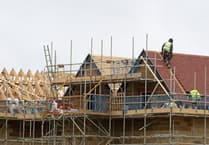East Hampshire District Council has progressed to the next phase of its suggestion for local government reorganisation by narrowing down the options for new unitary councils to four.
The reorganisation is part of a central government requirement for all two-tier council areas across the country to transition to single-tier unitary authorities.
Under these proposals district, borough and county councils would no longer exist, while existing unitary councils may find themselves absorbed into larger unitary authorities providing all council services in their areas.
In March, East Hampshire submitted its initial proposals to central government - alongside those of the other 14 local authorities in Hampshire.
Since then East Hampshire has worked in partnership with Hampshire County Council to develop an evidence-based proposal for a preferred option.
This process has involved rigorous analysis of detailed data and qualitative information to refine the potential scenarios to four.
The four options are:
Option 1
North - Basingstoke & Deane, East Hampshire, Hart, New Forest, Rushmoor, Test Valley, Winchester.
South - Eastleigh, Fareham, Gosport, Havant, Portsmouth, Southampton.
Isle of Wight.
Option 2
North - Basingstoke & Deane, East Hampshire, Hart, Rushmoor, Test Valley, Winchester.
South West - Eastleigh, New Forest, Southampton.
South East - Fareham, Gosport, Havant, Portsmouth.
Isle of Wight.
Option 3
North - Basingstoke & Deane, East Hampshire, Hart, Rushmoor, Winchester.
South West - Eastleigh, New Forest, Southampton, Test Valley.
South East - Fareham, Gosport, Havant, Portsmouth.
Isle of Wight.
Option 4
North East - Basingstoke & Deane, Hart, Rushmoor.
Central - Test Valley, Winchester, East Hampshire.
South West - Eastleigh, New Forest, Southampton.
South East - Fareham, Gosport, Havant, Portsmouth.
Isle of Wight.
East Hampshire District Council and Hampshire County Council are assessing the data and doing a financial appraisal considering implementation costs, payback periods and the broader economic context of each area.
Data includes population size, levels of deprivation, employment statistics and potential business rates revenue.
A preferred option is expected to be considered by councillors at East Hampshire District Council and Hampshire County Council on July 17 and 18.
Once a preferred option has been selected there will be a public consultation starting later this month. Councillors will consider the final proposal in September before submitting it to central government on September 26.
The other councils in Hampshire are exploring three options, each proposing five unitary authorities. For more information about their plans and public consultation visit https://ourplaceourfuture.commonplace.is/
East Hampshire District Council leader Cllr Richard Millard said: “We are now in a position to dig into the detail of four options and consider which best meets central government criteria.
“Once this next stage of robust analysis has been completed, we will propose a preferred option from these four, which will be considered by our councillors.
“When the preferred option has been selected we will seek residents’ views to further develop our proposal.”
Hampshire County Council leader Cllr Nick Adams-King said: “By simplifying how councils work across the area we can make services better and easier to access, more joined-up, and deliver great value for money for taxpayers, all while protecting what matters most to local people.”





Comments
This article has no comments yet. Be the first to leave a comment.